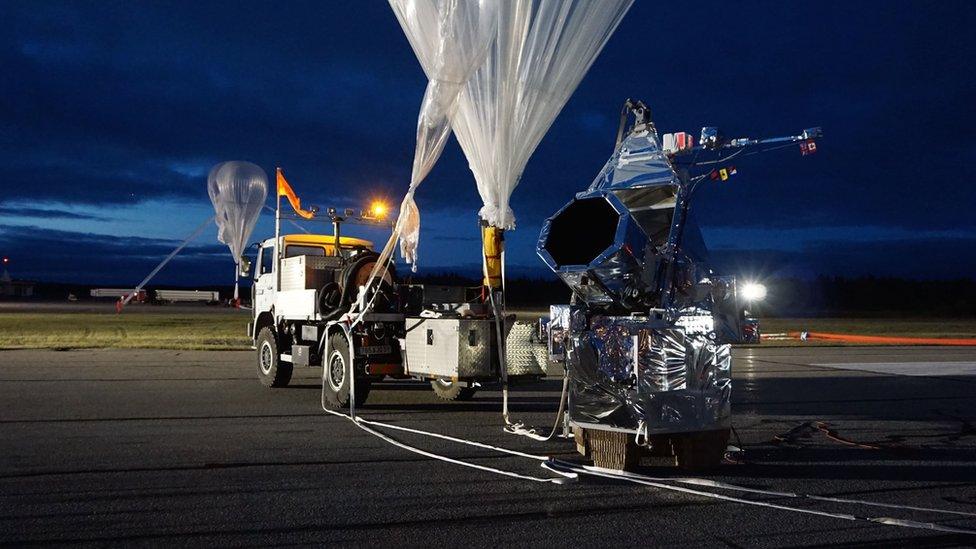A giant balloon will send a new telescope to space!
- Published
- comments

The telescope is expected to go on its first mission in April 2022
There's some exciting news for space lovers - we could soon see high quality images of our universe taken by a brand new telescope.
The Superpressure balloon-Borne Imaging Telescope, which is also known as SuperBIT, weighs as much as a car and it'll be launched to the edge of space by a helium balloon the size of a football stadium!
The balloon, which is from Nasa, can retain helium for months at a time while circling the Earth.
Scientists form Durham, Toronto and Princeton Universities have come together with Nasa and the Canadian Space Agency to build the telescope.
It's expected to make its first trip in April next year and will be tasked with taking high resolution pictures from space which will rival those captured by the Hubble Space Telescope.
Scientists hope the images will help them find out more about the properties of dark matter.
SuperBIT carried out a test flight back in 2019
"New balloon technology makes visiting space cheap, easy, and environmentally friendly," said Mohamed Shaaban who is a PhD student at the University of Toronto.
"SuperBIT can be continually reconfigured and upgraded, but its first mission will watch the largest particle accelerators in the Universe: collisions between clusters of galaxies."
Watch the SuperBIT test flight to space in 2019, Pictures courtesy of Professor Richard Massey/Durham University
The science goal for SuperBIT's 2022 flight is to get high-resolution images which will enable the scientists to find out more about dark matter. Dark matter is invisible, however, astronomers are able to map it by the way it bends rays of light. This technique is known as gravitational lensing.
SuperBIT will test whether dark matter slows down during collisions, which are the occasional, natural mergers between galaxies - all of which are surrounded by vast clouds of dark matter.
The telescope will travel around the Earth several times at an altitude of an incredible 40km for up to three months.
It'll take pictures of the sky at night and will use solar panels to recharge its batteries during the day.
Nasa's Space balloon in action (2017)
SuperBIT carried out a test flight back in 2019 which demonstrated its extraordinary pointing stability.
It was able to remain focused on a specific target with a change of less than one thirty-six thousandth of a degree for more than an hour - that means it's very stable! This is important as it'll help the telescope to take very clear images.
The telescope's first mission is to measure the properties of dark matter particles. These are invisible, but astronomers are able to map it by the way it bends rays of light.
"Cavemen could smash rocks together, to see what they're made of," said professor Richard Massey from Durham University.
"SuperBIT is looking for the crunch of dark matter. It's the same experiment, you just need a space telescope to see it."
- Published20 May 2020
- Published10 August 2023
- Published8 July 2021
